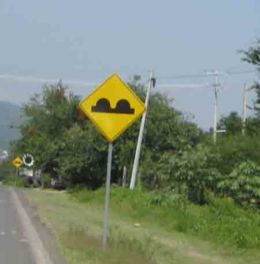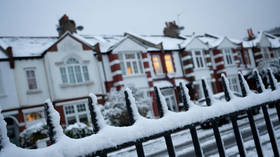Evenings with Lanc, by Fred Reed

The road, little trafficked, ran past the college post office, past my grandfather’s house, and through a stretch of woods to Lanc’s store. Then it wound off through wooded Virginia countryside.
Hampden-Sydney was one of the small Southern colleges founded well before modern times–1776 for Hampden-Sydney–offering liberal arts schooling of remarkably good academic quality. Many still exist: William and and Mary, Randolph Macon Woman’s College, Mary Washington, on and on. The setting was rural and bucolic, the nights speckled with stars, quiet except on weekends when the fraternities celebrated.
On many nights, summer and winter, I walked the road to Lanc’s store. It was a small, ancient frame building that looked as if it had been there since the Civil War and was thinking about collapsing.
Lanc–Lancaster Brown–was an aged black man who had lived for many years in a house set off in the nearby forest. In his younger days he had been in the Europe of World War One in a labor battalion of local blacks. France had astonished him. The illiterate young Negros of the batallion discovered that French women were not prejudiced against them and that the beer gardens, as Lanc called them, were open to all.
I discovered Lanc’s store on a winter night when I was walking the deserted road to commune with the dark woods and stars sharp in the cold and engaging in the Byronic delusions of young men who have not yet grasped the true nature of the world. The store loomed black with warm light straying from its only window. I had no idea who might be inside, but entered on a whim.
It was the size of a large closet. Light came from a bare bulb dangling on a wire from the ceiling. On the right side was an old, old glass display case with various sweets and, on top, jars of sausages floating in vinegar and pickled pigs’ feet. A worn bench, perhaps a pew from some forgotten church, ran along the other side.
At the back was a glowing pot bellied wood stove and, sitting next to it, Lanc. I couldn’t tell how old he was, but very. He stood with arthritic effort and greeted me, surprised to see a white face. He spoke with a sort of mumble. Again, Lanc was old.
Awkward myself, I said Hi, I was Rick Reed, Dr. Reed’s grandson. Hampden-Sydney was then small and isolated and my grandpa, as I still called him, had for decades been a professor (mathematics) and sometimes dean. My credentials were good. I was welcome, if my presence was unusual.
Hampden-Sydney is of the Cavalier South, the South of Jefferson and Lee and Washington, not of the brutal slave plantations of the Deep South, and unconnected with the equally brutal slave traders of New England who grew fat on their African cargos. The local racial relationship was patriarchal, with the whites well disposed to the blacks, but not wanting integration and not knowing what to do about the whole situation.
I became a regular. On many nights we sat at the back, frying baloney on the stove top. On occasion an apple joined the baloney. I was partial to the pickled sausages.
Lanc had lost much sharpness with the years but liked to reminisce about Paris. Sometimes he forgot which stories he had told and told them again. I didn’t mind.
Local blacks dropped in for a soda or loaf of bread or just to chat. I remember one night a girl, I’d guess in her early teens, came in and asked someone, “Where Jimmy and Morton?” or some other names. “They coon hunting,” was the answer. “Four-legged or two-legged kind?” she asked and then, seeing me, tittered in embarrassment.
Lanc talked a good bit about life in the labor battalion and going over on a troop ship, or such it sounded to have been. This was quite an experience for a man who had perhaps never been fifteen miles from home. But his favorite memories were of the beer gardens. Why, you could get a great big glass of beer, great big, didn’t cost hardly nothin,’ Anybody could go into into the beer gardens. Stay up all night, and go to work in the morning.
He was a relic, not quite an Uncle Remus South but of a different sort from the teenagers who came in to buy cokes. These were literate and quicker and belonged to their time. The black schools of Prince Edward County were not Eton but reasonably effective. Good kids, polite and affable, they bore no similarity to those who in later years would be killing each other in Detroit and Chicago.
I’m not sure what Lanc’s relations were with his suppliers. Beyond snacks and a few staples like bread and canned goods, he did not sell much. There was no refrigerator. Transactions took place through what may have been the oldest cash register on either side of the Mason-Dixon line. Everything seemed old. The Marlboro poster on the wall with the busty red-lipped blonde must have been printed in about 1953. He didn’t sell cigarettes.
On campus I was getting a reputation as a nigger lover. I wasn’t especially, at least not in an ideological sense. I just liked Lanc and the evenings of wood smoke and the sense of escaping into another world, another time. This rep for racial apostasy grew when I rented a room from Ben Hairston, another black guy in his thirties who drove a hearse he had bought for a song. Ben, like Lanc, had been around. He was worth talking to, which was not true of the sons of small town lawyers and shopkeepers who made up the studentry of the college.
Later, having become a journalist, I reflected on those days and what to make of them. Blacks were not persecuted around Hampden-Sydney, but neither did they rise to be engineers and IT managers. After the civil rights movement, they still were not persecuted, and still did not rise to become….Plus ca change.
Eventually I graduated and left. In the nature of the world before the internet I never saw Lanc again. Years later I passed through and went by to see whether the store was still there. It wasn’t.
Disculpatory note: In my last outgushing in this space I wrote of a booklet coming with a chemistry set that explained a bit of atomic structure and the difference between atomic number and atomic weight. Somehow this became “difference between atomic structure and atomic weight,” which is straightforwardly idiotic. Pardon.
start Daoud, GoDaddy, pseudo book review, red drops
Drug rehab is mostly a PR figleaf for the criminal justice system. Willy Bill, strung out on heroin, gets convicted of possession. Sending him to jail is not a good idea as these are bulging to the point of illegality. Letting him go will make the courts look soft on crime, and anyway Willy Bill will be shooting up again by nightfall. Rehab sounds good to liberals, and conservatives cannot easily complain of anything so progressive and constructive. All involved know that rehab doesn’t work but neither does jail.
Question: Keeshawn, seventeen, barely literate, gets twelve years for robbery.
I don’t say this so that you will think, gee, Fred is sure enough a splendid fellow (though if you have leanings in this direction, I don’t discourage them (but to make the point that, like all of us, I knew somewhat of things I did for a living. The service academies claim to be very selective, accepting only about ten percent of applicants. This is fraud, Bakken says. An application occurs when you fill out an application form. The academies cant as applicants everyone who asks for information. The actual acceptance rate is more like fifty percent, hardly selective.
The purchase of weapons is corrupt through and through. By now this is hardly secret to the alert. The disturbing thing is that officers, those steely-eyed warriors with the firm handshakes, know perfectly well what is going on yet remain complicit. In my day the protected defectives were things like DIVAD, Viper, the Bradley, the Osprey. Today most conspicuously we have the F35, a horrendous dog with an unending list of comic opera defects that the military, and Lockheed Martin insist will be roses any day now. They know exactly what they are doing.
Bakken notes, as has been noted for decades, that almost kn connection exists between the military and civilian society. Just so. While the draft existed, many families had someone recently int the military. Today, that connection is gone. If you are not in uniform and haven’t been, how many military people do you know? In Washington the number is close to zero. Today the military is isolated in places like Fort Hood in Texas and Camp Lejeune in Jacksonville, NC.


